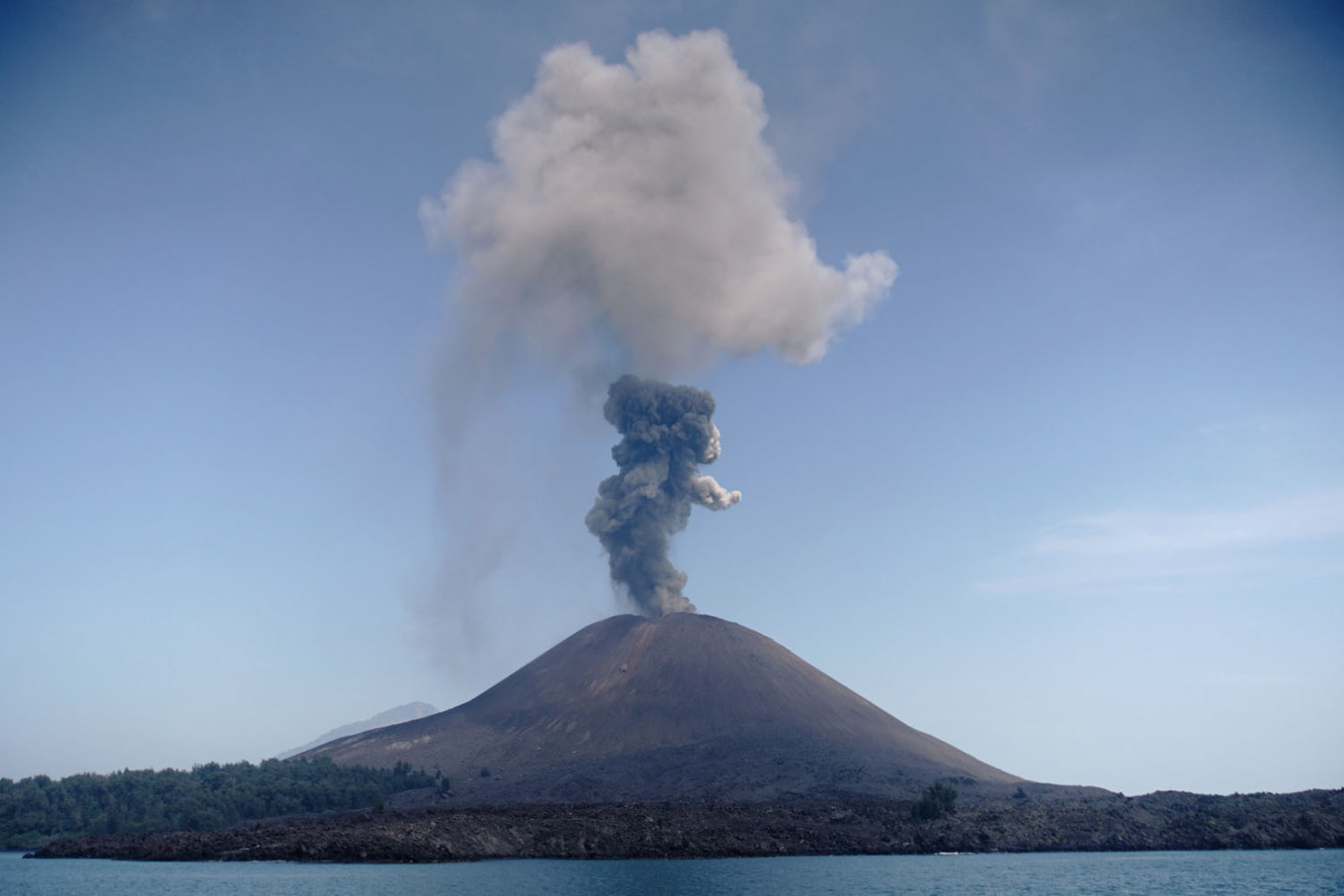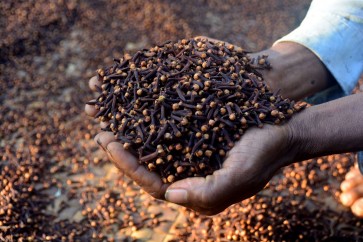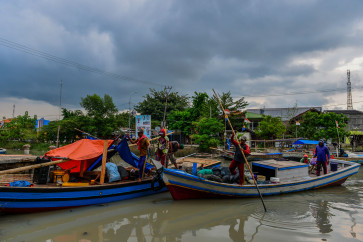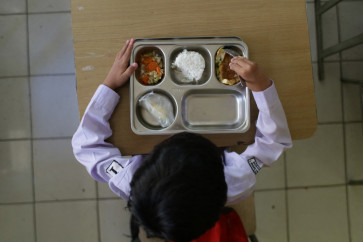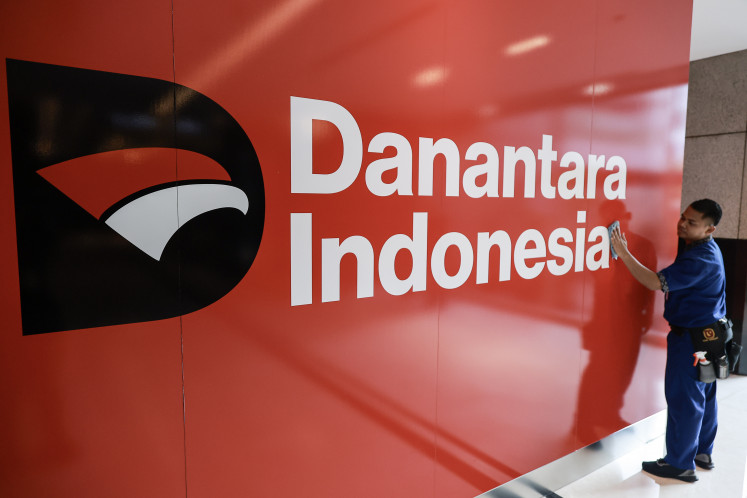Popular Reads
Top Results
Can't find what you're looking for?
View all search resultsPopular Reads
Top Results
Can't find what you're looking for?
View all search resultsVolcanic eruptions, a new hope for mitigating climate change
Although volcanic soils only cover around 124 million hectares, or around 1 percent of the Earth’s surface, they support the life of 10 percent of the world’s population.
Change text size
Gift Premium Articles
to Anyone
S
itting on the Ring of Fire, Indonesia has been living with volcanic eruption as one of the natural disasters it faces almost every year. Most recently Mount Semeru in Lumajang, East Java erupted in December of 2021, claiming more than 40 lives and displacing thousands of others.
In Yogyakarta, Mt. Merapi, dubbed the most active volcano in Indonesia, has spewed hot clouds several times since the beginning of January 2021. At the end of 2020, Mt. Ili Lewotolok in Lembata regency in East Nusa Tenggara, spewed a column of volcanic ash and smoke, causing more than 4,600 residents to flee their homes.
History also shows that Indonesia has experienced several great volcanic eruptions such as the Mt. Tambora eruption in 1815 and Mt. Krakatau in 1883, which destroyed the environment and caused so many casualties.
However, we tend to view volcanic eruptions in terms of their disastrous impacts without considering their positive side. For example, the development of volcanic material from eruptions into fertile volcanic soils has been almost neglected. As the most productive soil, young volcanic soils can rejuvenate vegetation fast and have some important properties such as a large amount of organic carbon, nitrogen and phosphate, while holding a huge amount of water.
Although volcanic soils only cover around 124 million hectares, or around 1 percent of the Earth’s surface, they support the life of 10 percent of the world’s population.
Volcanic eruptions are also perceived as one of the contributors to climate change. The impact of volcanic eruptions on the climate has become an intriguing discussion since it has been found that gases and ash materials released during volcanic eruptions can reflect solar radiation, resulting in a cooling effect on the planet’s temperature. Another crucial impact of volcanic eruptions on climate is that they release greenhouse gases such as water vapor (H2O) and carbon dioxide (CO2) during eruptions.
Again, volcanic eruptions are always seen in the context of their negative impact on climate. In fact, it is little known that volcanic eruptions can be useful for reducing CO2 in the atmosphere and in turn mitigating climate change. This promising contribution is associated with increasing biomass in volcanic soils derived from deposited volcanic ash that has weathered.
The high biomass input (as living and dead plants) is a result of high nutrient content released from weathered volcanic material. We already know that plants as biomass need CO2 from the atmosphere to grow, implying that the more biomass in the soils the higher amount of CO2 taken up from the atmosphere. Furthermore, it has been observed that CO2 can be stabilized in volcanic ash-derived soil as a long-term soil organic carbon (SOC) through soil minerals-SOC complexes.
Indonesia has a chain of volcanoes (147 volcanoes, 79 have erupted in the last 400 years and 76 are still active) that spread from Sumatra in the West to the Papua in the East. Therefore, Indonesia is blessed with a large area of volcanic soils. They potentially act as a long-term carbon sink to reduce CO2 from the atmosphere.
Despite accounting for about1 percent of the Earth’s surface, volcanic soils contribute to around 5 percent of soil organic carbon worldwide, constituting over 250 tons of carbon per hectare in the upper 100 centimeters of volcanic soils. It is a promising medium to store and prevent carbon from being emitted into the atmosphere.
However, due to a lack information about the role of volcanic soils, as well as non-volcanic soils, measures to prevent volcanic soil degradation are almost ignored. Similar to common soils, the prominent issue concerning volcanic soil degradation is soil erosion due to decreasing volcanic soil cover.
Deforestation as a result of human activities has been responsible for volcanic soil erosion. This has been more pronounced on Java Island where its population has grown rapidly. For example, the Dieng Plateau in Central Java, an area of volcanic soil, has reportedly lost its land cover due to deforestation. It is estimated that around 60 percent of 20,000 ha of forest in the Dieng Plateau disappeared in 2000.
Ratifying the Paris Agreement in 2016, Indonesia was committed to reducing carbon dioxide emissions by 29 percent and keeping the temperature increase below 2 degrees Celsius in the period between 2020 and 2030. The main Indonesian concern to achieve those targets is avoiding deforestation, since Indonesia contributes to greenhouse gas emission mostly from forest fires.
Nevertheless, protection of volcanic soils from erosion should not only be focused on conversion of land cover but also on retaining soil organic carbon in soils. Therefore, many measures and policies aimed at keeping carbon in soil should be taken into consideration.
***
The writer is a lecturer and researcher of environmental chemistry, University of Bengkulu, with a doctoral degree from the University of Natural Resources and Life Sciences, Vienna.

